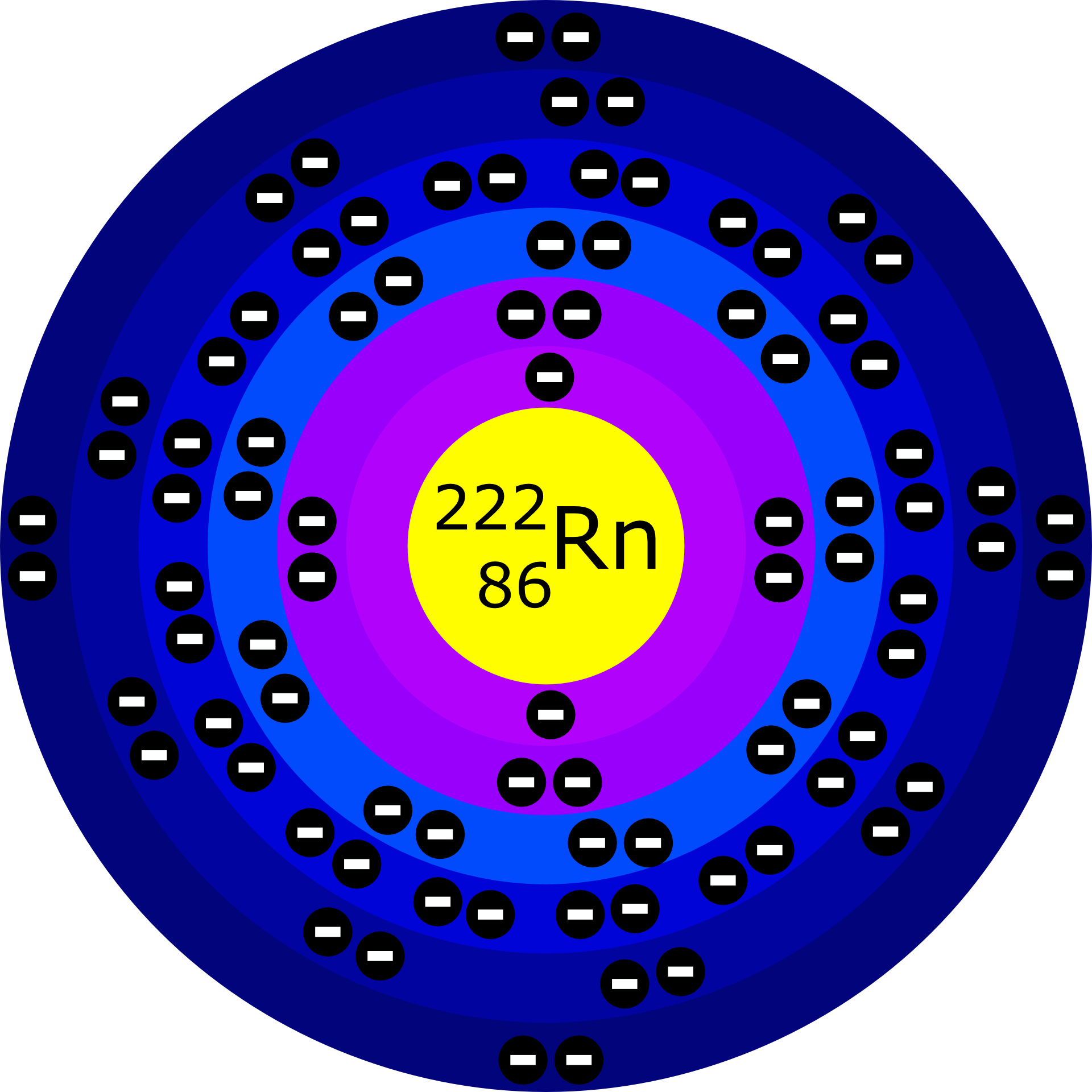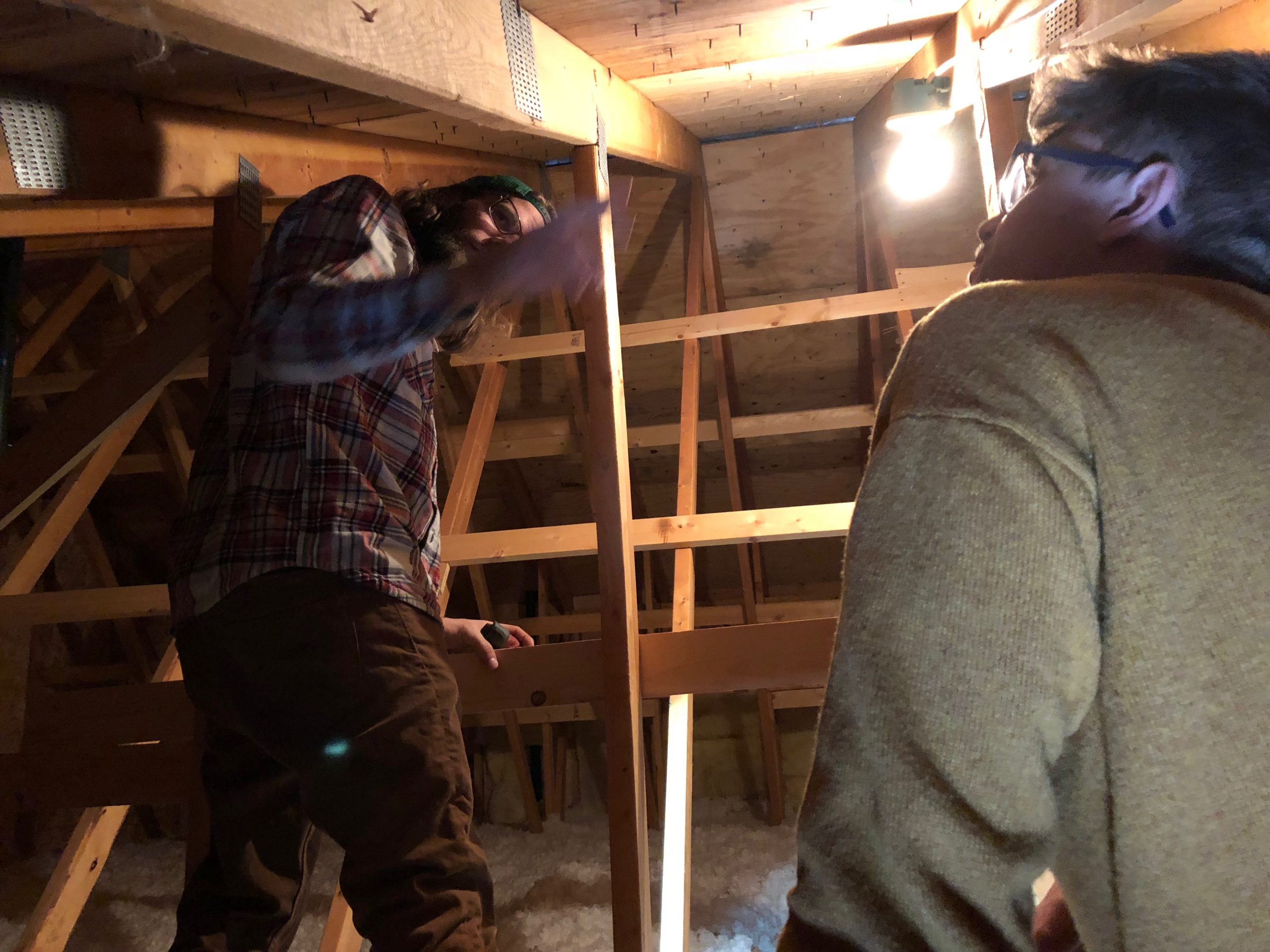
Dear Eartha, I heard that January is National Radon Action Month. What is radon? What actions do I need to take?
Not to be dramatic, but radon is a silent killer, and it could be lurking in your home. This colorless, odorless, tasteless gas is the second leading cause of lung cancer deaths in the U.S. In fact, the EPA estimates that about 21,000 Americas die from radon each year.
So how does radon end up in your home? Radon is released when uranium, thorium, and radium – all radioactive elements – decay in rocks and soil. The gas escapes from the ground and ends up in the air. And the truth is, we all breathe in radon every day. It’s all around us, but usually at very low levels because the gas mixes with the rest of the outdoor air.
Indoors, however, it’s another story. We design our homes to prevent the indoor air from leaking outside – otherwise our homes would be freezing, and our heating bills would be through the roof! But by keeping the air inside, we’re also keeping contaminants inside too, like radon. Because of our local geology, Summit County falls within Radon Zone 1 – this means we’re at the highest risk for dangerous radon levels indoors. The EPA recommends that folks take action if radon levels in their home are 4 picocuries per liter or higher. The average radon level in Summit County homes is 10 picocuries per liter. Don’t worry about what a picocurie is – the bottom line is that radon is a risk in our community.
But not to worry! You don’t have to throw open all your windows and freeze all winter to avoid excessive radon exposure. After all, January is National Radon Action Month, and there are important preventative actions you can take to keep yourself and your family safe.
Get Tested
The first step to figuring out if you have a radon problem at home is to get tested. Good news for us Summit County residents – it’s easy and free to test for radon in your home. Radon test kits are available at the Summit County Environmental Health Department located at 0037 Peak One Drive in Frisco. Kits include easy to follow-instructions for completing the test and mailing it to a lab for results. They’re even pre-stamped and addressed for convenience!
 What happens if you have high radon levels? Then you hire a certified radon-mitigation contractor to install a – you guessed it – radon-mitigation system in your home. This typically consists of piping connected to a constantly-running fan that vents the radon out of your home. More information is available from the Summit County Environmental Health Department.
Other Indoor Air Quality Issues
Radon isn’t the only potential cause of unhealth air quality in your home. The average American spends nearly 90% of their time indoors, and according to the EPA, indoor air quality is typically more polluted than outdoor air.
Our homes are supposed to be a safe place, but sometimes they can make us sick! Common indoor contaminants include dust, pet dander, smoke, mold, and toxic chemicals. And if your home was built before 1978, chances are, it may contain lead-based paint.
Homes with crawlspaces are especially susceptible poor indoor air quality. A typical crawlspace that hasn’t been mitigated for radon or upgraded for energy efficiency allows moisture and various soil gases to seep into a home. If left un-treated, this will not only lead to decreased comfort and an unhealthy indoor environment, but will also make your home less durable.
What happens if you have high radon levels? Then you hire a certified radon-mitigation contractor to install a – you guessed it – radon-mitigation system in your home. This typically consists of piping connected to a constantly-running fan that vents the radon out of your home. More information is available from the Summit County Environmental Health Department.
Other Indoor Air Quality Issues
Radon isn’t the only potential cause of unhealth air quality in your home. The average American spends nearly 90% of their time indoors, and according to the EPA, indoor air quality is typically more polluted than outdoor air.
Our homes are supposed to be a safe place, but sometimes they can make us sick! Common indoor contaminants include dust, pet dander, smoke, mold, and toxic chemicals. And if your home was built before 1978, chances are, it may contain lead-based paint.
Homes with crawlspaces are especially susceptible poor indoor air quality. A typical crawlspace that hasn’t been mitigated for radon or upgraded for energy efficiency allows moisture and various soil gases to seep into a home. If left un-treated, this will not only lead to decreased comfort and an unhealthy indoor environment, but will also make your home less durable.
 Ensuring a Healthy Home
In addition to a radon test, what can you do to make sure your home is a healthy place to live? If your home is older, be sure to have your painted surfaces tested for lead, especially before any remodel work, or if you have children. Make sure smoke alarms are installed in all bedrooms replace the batteries regularly. The same goes for carbon monoxide (CO) alarms. For many CO alarms available on the market, the alarm will only sound after a period of exposure to this other deadly-odorless gas. For this reason, it’s important to completely evacuate your home if the alarm is ever heard. And don’t forget to keep dangerous chemicals away from children and pets.
If you’re interested in learning more about improving the health and safety of your home, contact the High Country Conservation Center. Through a home energy assessment, our team of energy experts can diagnose potential health concerns within your home and give you with a deeper understanding of how all the different components of your home work together as a system to keep you safe, healthy, and warm.
Ensuring a Healthy Home
In addition to a radon test, what can you do to make sure your home is a healthy place to live? If your home is older, be sure to have your painted surfaces tested for lead, especially before any remodel work, or if you have children. Make sure smoke alarms are installed in all bedrooms replace the batteries regularly. The same goes for carbon monoxide (CO) alarms. For many CO alarms available on the market, the alarm will only sound after a period of exposure to this other deadly-odorless gas. For this reason, it’s important to completely evacuate your home if the alarm is ever heard. And don’t forget to keep dangerous chemicals away from children and pets.
If you’re interested in learning more about improving the health and safety of your home, contact the High Country Conservation Center. Through a home energy assessment, our team of energy experts can diagnose potential health concerns within your home and give you with a deeper understanding of how all the different components of your home work together as a system to keep you safe, healthy, and warm.
 What happens if you have high radon levels? Then you hire a certified radon-mitigation contractor to install a – you guessed it – radon-mitigation system in your home. This typically consists of piping connected to a constantly-running fan that vents the radon out of your home. More information is available from the Summit County Environmental Health Department.
Other Indoor Air Quality Issues
Radon isn’t the only potential cause of unhealth air quality in your home. The average American spends nearly 90% of their time indoors, and according to the EPA, indoor air quality is typically more polluted than outdoor air.
Our homes are supposed to be a safe place, but sometimes they can make us sick! Common indoor contaminants include dust, pet dander, smoke, mold, and toxic chemicals. And if your home was built before 1978, chances are, it may contain lead-based paint.
Homes with crawlspaces are especially susceptible poor indoor air quality. A typical crawlspace that hasn’t been mitigated for radon or upgraded for energy efficiency allows moisture and various soil gases to seep into a home. If left un-treated, this will not only lead to decreased comfort and an unhealthy indoor environment, but will also make your home less durable.
What happens if you have high radon levels? Then you hire a certified radon-mitigation contractor to install a – you guessed it – radon-mitigation system in your home. This typically consists of piping connected to a constantly-running fan that vents the radon out of your home. More information is available from the Summit County Environmental Health Department.
Other Indoor Air Quality Issues
Radon isn’t the only potential cause of unhealth air quality in your home. The average American spends nearly 90% of their time indoors, and according to the EPA, indoor air quality is typically more polluted than outdoor air.
Our homes are supposed to be a safe place, but sometimes they can make us sick! Common indoor contaminants include dust, pet dander, smoke, mold, and toxic chemicals. And if your home was built before 1978, chances are, it may contain lead-based paint.
Homes with crawlspaces are especially susceptible poor indoor air quality. A typical crawlspace that hasn’t been mitigated for radon or upgraded for energy efficiency allows moisture and various soil gases to seep into a home. If left un-treated, this will not only lead to decreased comfort and an unhealthy indoor environment, but will also make your home less durable.
 Ensuring a Healthy Home
In addition to a radon test, what can you do to make sure your home is a healthy place to live? If your home is older, be sure to have your painted surfaces tested for lead, especially before any remodel work, or if you have children. Make sure smoke alarms are installed in all bedrooms replace the batteries regularly. The same goes for carbon monoxide (CO) alarms. For many CO alarms available on the market, the alarm will only sound after a period of exposure to this other deadly-odorless gas. For this reason, it’s important to completely evacuate your home if the alarm is ever heard. And don’t forget to keep dangerous chemicals away from children and pets.
If you’re interested in learning more about improving the health and safety of your home, contact the High Country Conservation Center. Through a home energy assessment, our team of energy experts can diagnose potential health concerns within your home and give you with a deeper understanding of how all the different components of your home work together as a system to keep you safe, healthy, and warm.
Ensuring a Healthy Home
In addition to a radon test, what can you do to make sure your home is a healthy place to live? If your home is older, be sure to have your painted surfaces tested for lead, especially before any remodel work, or if you have children. Make sure smoke alarms are installed in all bedrooms replace the batteries regularly. The same goes for carbon monoxide (CO) alarms. For many CO alarms available on the market, the alarm will only sound after a period of exposure to this other deadly-odorless gas. For this reason, it’s important to completely evacuate your home if the alarm is ever heard. And don’t forget to keep dangerous chemicals away from children and pets.
If you’re interested in learning more about improving the health and safety of your home, contact the High Country Conservation Center. Through a home energy assessment, our team of energy experts can diagnose potential health concerns within your home and give you with a deeper understanding of how all the different components of your home work together as a system to keep you safe, healthy, and warm.
